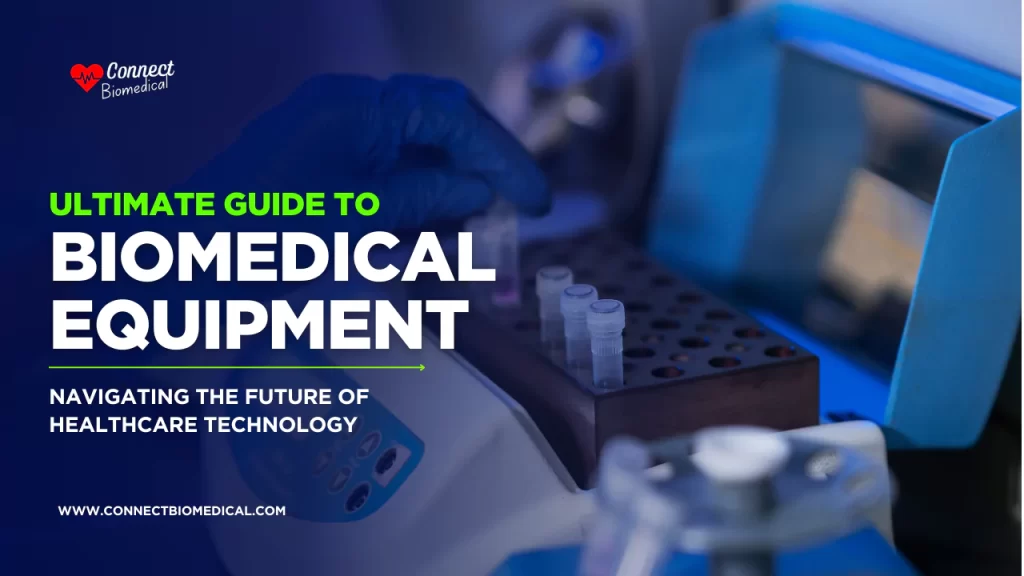Biomedical engineering refers to a dynamic aspect wherein principles of engineering congregate with medical and biological sciences to solve intricate challenges regarding health. The process from an idea in the lab to a product that is marketable as well as benefiting patients is unsettling with technical, intricate, scientific, regulatory, as well as financial hurdles.
However, the market is driven by an uncontrollable demand for more effective treatments, better diagnostics, as well as proactive health management. Biomedical engineers are focusing on pushing the boundaries consistently.
Among the most impacting trends that are contributing to the upgradation of this landscape is the integration of wearable technology, changing the nodes by aspects such as managing, monitoring, and interacting with an individual’s health data.
The Interdisciplinary Nexus of Biomedical Engineering
Biomedical engineering is by nature a combinative approach, inclusive of knowledge from mechanical, electrical, chemical, as well as materials engineering, physiology, biology, and medicine.
This distinct mixture allows for the development of new solutions of innovative nature that range from medical devices of sophisticated nature up to diagnostic tools with features such as regenerative therapies, advanced prosthetics, and drug delivery systems.
The major goal is to enhance human health, extend lifespan, and enhance quality of life. This requires not just scientific brilliance but also a keen understanding of clinical needs, patient experience, and complex pathways to commercialization.
From Bench to Bedside: Navigating the Commercialization Maze
The entire process of biomedical innovation, from its concept design in a research laboratory to its adoption rate across the globe in the market, is a multi-stage process. It starts with the discovery and research, determining an unmet clinical need. This is followed by prototyping, proof-of-concept studies, and rigorous preclinical testing.
One of the most significant barriers is technical and scientific complexity. Biological systems are intricate by nature and frequently unpredictable. Ensuring robustness and consistency of results is of utmost importance, which requires expensive testing. For instance, developing a new implantable device requires careful consideration of biocompatibility for long-term stability within the body and mechanical integrity.
Each choice of material and design needs to undergo a stringent evaluation to make sure that it can withstand the physiological environment without severe reactions.
The next barrier is regulatory compliance. Biomedical devices need to comply with the stringent regulations from government bodies such as the FDA in the US, EMA in Europe, and others. These regulations are structured in a way to ensure the efficacy and safety of new products. Guiding this landscape includes pre-market approvals, long documentation, clinical trials, as well as post-market surveillance.
The process is lengthy in nature and expensive, with time frames stretching for years. Emerging fields, such as complex combinations of artificial intelligence products, face additional examination as regulatory bodies attempt to maintain the pace along with rapid technological advancements.
The Rise of Wearable Technology: A Game Changer
Wearable technology is emerging as one of the most impactful factors contributing to the market growth in biomedical engineering. These electronic devices are designed in such a way to be worn on the body so that they integrate seamlessly into daily life while simultaneously collecting physiological data consistently.
From the utilization of fitness trackers and smartwatches to specialized patches and medical sensors, wearable technology is contributing to the updated healthcare landscape.
Early wearable technology especially focuses on measuring steps, fitness tracking, calories burned, and other factors. However, advancements in sensor technology, miniaturization, and battery life, among others, have inspired them into the field of clinical relevance.
It is now able to monitor a wide array of physiological parameters and vital signs, including:
- Heart Rate and Rhythm: The feature offered to determine heart rhythms of irregular nature through ECG capabilities, sending alerts to their healthcare providers as well as to users.
- Oxygen Saturation (SpO2): This feature is vital for respiratory health monitoring, particularly in conditions such as sleep apnea.
- Sleep Patterns: To track sleep stages, disturbances, and quality, it is able to provide insights into the detection of sleep disorders as well as overall health performance.
- Temperature: Temperature monitoring on a continuous level is able to identify fever as well as track recovery from illness.
- Glucose Levels: The increase in utilization of continuous glucose monitors (CGMs), a form of wearable technology, is contributing substantially to the management of diabetes, removing the need for finger pricks.
The impact of wearable technology on healthcare is adaptable. For patients, it provides innovative empowerment. Individuals are able to monitor their health metrics actively and obtain actionable insights regarding their choice of lifestyle choices. This results in a sense of urgency and promotes healthier habits.
For healthcare providers, wearable technology can offer continuous data on a real-time basis that was previously unattainable. This data leads to precise diagnoses, proactive interventions, as well as personalized treatment plans. For instance, a physician is able to review a patient’s data regarding heart rate over a period to determine trends that indicate an imminent cardiac issue.
This monitoring capability of a remote nature helps in the reduction of the need for efficiency enhancement, frequent in-person visits, and potentially lowers healthcare costs. The market for remote patient monitoring, which is heavily dependent on wearable technology, is experiencing significant growth.

The Future of Biomedical Engineering and Wearable Technology
The combination of cutting-edge technologies and biomedical engineering is showcasing a lucrative growth future over the forecast period.
Machine Learning (ML) and Artificial Intelligence (AI) are becoming essential to wearable technology. AI algorithms have the competency to process large amounts of data that is collected by wearable devices. They can identify intricate patterns and estimate potential health risks with precise accuracy. This enables predictive diagnostics, personalized alerts, and other health recommendations.
Discreet Design and Miniaturization are current ongoing trends. It is expected that future wearable technology will be smaller in size, seamlessly integrated into clothing, and more flexible. This improves the user’s compliance and comfort and enabling continuous monitoring less intruding. The production of non-invasive sensors for their utilization in biomarkers in tears, sweat, or saliva is further contributing to the diagnostic capabilities over the forecast period.
Therapeutic Wearables are gaining traction. A few of the wearable technologies are currently delivering therapies. For instance, pain management devices, wearable insulin pumps, and devices that are utilized for neurostimulation. This aspect is expected to observe significant growth.
Challenges and Opportunities Ahead
Wearable technology, as well as other biomedical innovations from lab to market, face considerable challenges. To ensure the accuracy of data and clinical validation is a key hurdle and is expected to remain one for the next couple of years, particularly for devices of consumer grade.
The volume of data that is generated by this wearable technology also presents challenges in regard to data storage, clinical interpretation, and analysis. The standardization of data formats and the development of interoperable systems are essential for optimizing the utility of this data.
However, the opportunities far supersede the challenges. Biomedical engineering that is driven by factors such as advancements in technology of wearables, advanced materials, AI, and personalized medicine, is expected to create significant, lucrative opportunities in the healthcare industry. It shows potential for early diagnosis of diseases, and treatments being more precise as individuals are motivated to take a more active role in managing their health.
The continuous upgradation from laboratory advances to market-ready solutions will increase rapidly in the field of unprecedented health outcomes for millions worldwide.
Conclusion
The article highlights biomedical engineering’s representation in healthcare innovation, with a focus on the lab-to-market processes. Wearable technology is emerging as a key trend, contributing to significant upgrades in health monitoring with real-time data. Regardless of the challenges in regulation and data accuracy, the integration of AI and therapeutic applications showcases a lucrative future with a focus on health management.





